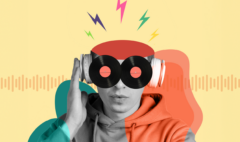5 Reasons Flashcard Apps are Useful for Learners
5 Reasons Flashcard Apps are Useful for Learners
Flashcards might be an early-19th-century creation, but 21st-century technological innovations have pushed these learning tools to greater heights. Today’s flashcard apps remain as vital learning instruments as their 19th- and 20th-century versions.
These technologies allow anyone across ages to enhance information acquisition, processing, and retention. Here are five reasons flashcard apps are useful for learners.
1. Makes learning easier, faster, and more fun
Some flashcard apps allow learners to transform their lessons into a game.
For example, the software might feature a Quiz mode complementing its Revision mode. A group of learners can compete with each other to see who gets the highest score. Now, that is more fun than spending hours with your head in the books.
Making learning more fun enables students to assimilate information and build knowledge faster. They will also find learning concepts or ideas easier. Young children will feel less anxious when they see their learning materials are in manageable chunks instead of one big pie.
2. Customizable
Flashcard apps have intuitive user interfaces allowing tutors, learners, or families to customize learning content. Conventional cardboard-based flashcards are permanent and don’t allow for modifications. Programs do.
You can create flashcards for facts and key figures and change them to chemical formulas or historical dates. One can add visual elements to make learning more fun and engaging without adding another device.
These technologies allow users to create flashcards in various styles, shapes, colors, and sizes. These visual elements add interest to the flashcards, motivating and facilitating learning.
3. Portable
Although traditional paper-based flashcards are convenient to bring anywhere, digital versions are more portable. Learners only need a single device (i.e., smartphone or tablet) they can slip in their pockets or bags.
One can do this with conventional flashcards. However, pocketing several decks of learning flashcards is next to impossible unless one has baggy shorts or an oversized bag.
Portable learning tools allow people to read, review, and test themselves on their current knowledge. They could be on a bus or a plane heading to a holiday destination, and learners will never miss a concept.
4. Records learning progress
Traditional flashcards allow learners to assimilate, process, and retain pieces of information. Unfortunately, it is easy to overlook or neglect challenging flashcards. One could also misplace them, disrupting knowledge-building continuity.
Flashcard apps are immune to these issues. These programs automatically store learning progress, allowing learners to check on digital flashcards that are too challenging to answer on the first few tries.
Learners can analyze the report to differentiate the easy flashcards from the challenging ones. They can focus more effort on solving the tricky cards and ensure learning continuity.
5. Fosters creativity
Making digital flashcards requires imagination and creativity. Although conventional flashcards also promote these attributes, they are somewhat limited.
Flashcard apps have many features to encourage creators and users to think outside the box. Color palettes, shape-forming tools, and add-ons can make flashcard creation more fun.
Creativity encourages and motivates people, especially children, to learn. It makes flashcard apps an invaluable tool in today’s learning needs.
Flashcard apps revolutionize learning by empowering learners to manage their learning needs. These technologies are also fun to use.
References
https://studentedge.org/article/five-reasons-why-flashcards-best-way-to-study
https://www.evelynlearning.com/flashcards-as-a-teaching-tool/
https://numberdyslexia.com/advantages-and-disadvantages-of-flashcards/
https://www.tutoringforexcellence.co.nz/3-reasons-why-flashcard-apps-are-useful-for-all-ages/
https://www.evelynlearning.com/flashcards-as-a-teaching-tool/










